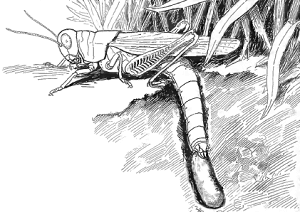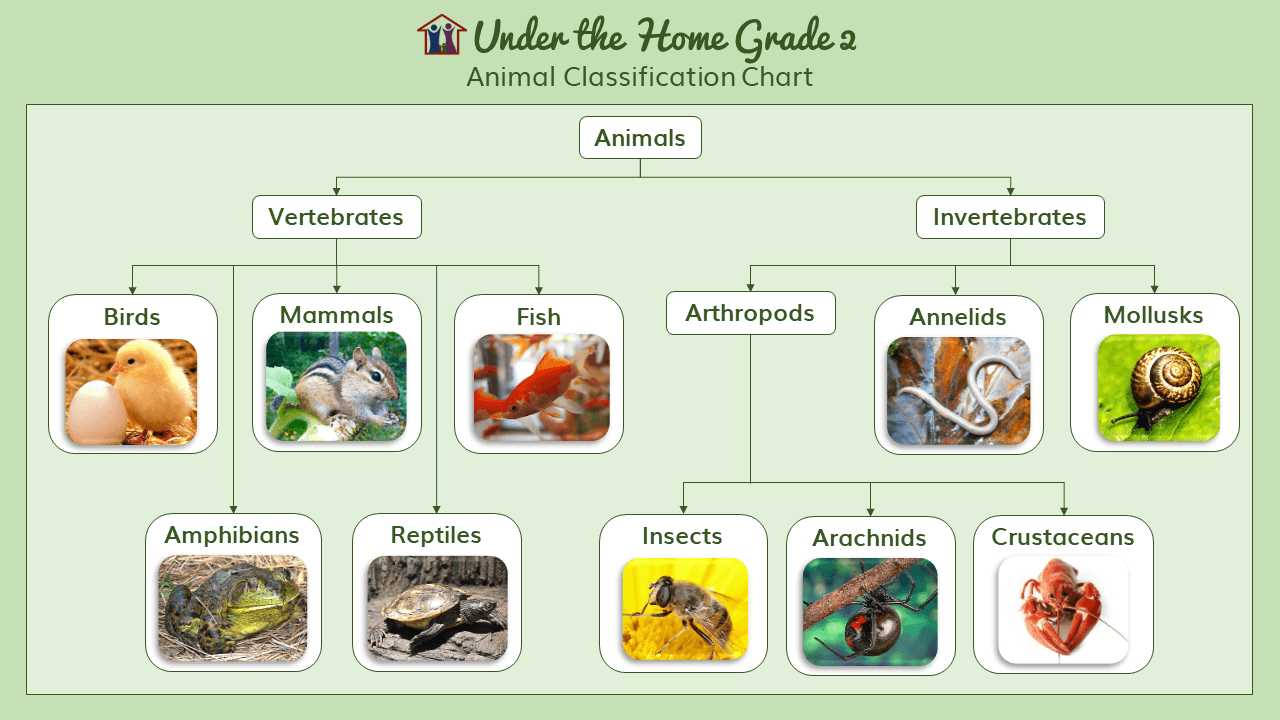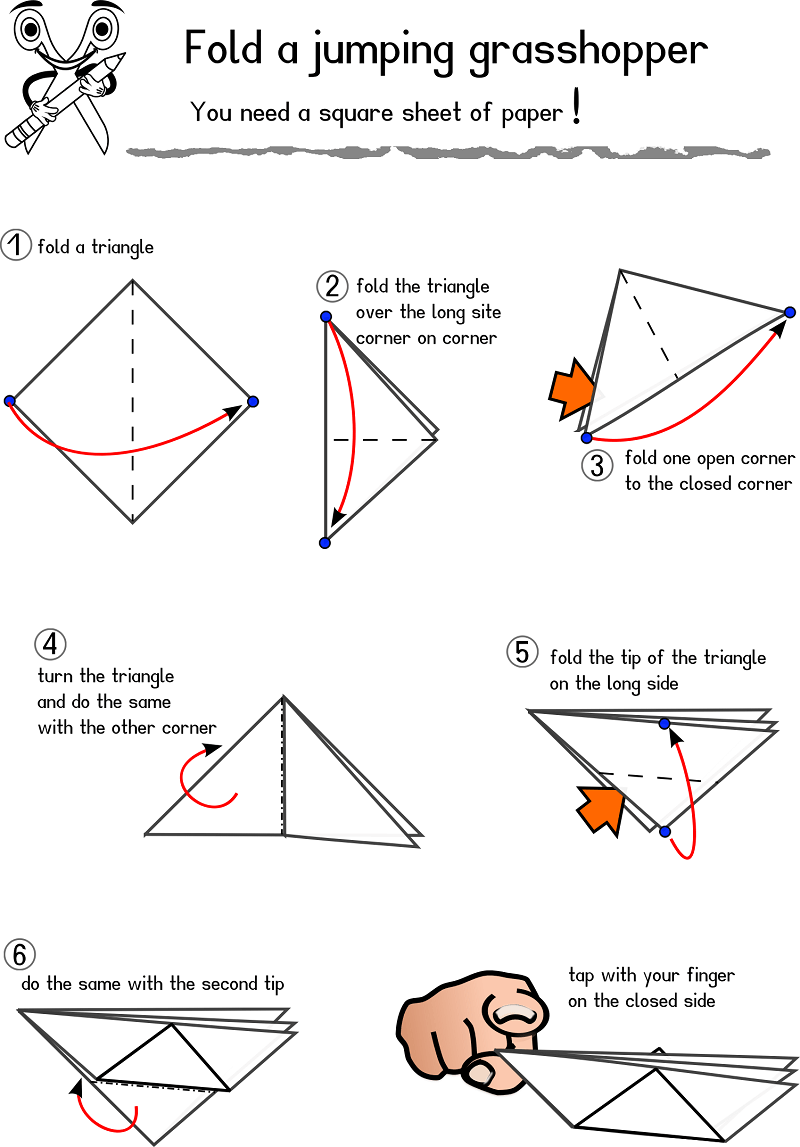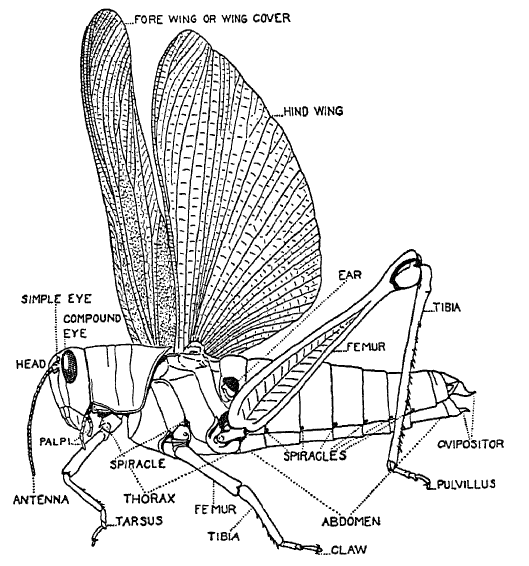Lesson 7: The Grasshopper
Performer: LibriVox - Claire Schreuder
'The Grasshopper Who Wouldn't Be Scared' from Among the Meadow People by Clara Dillingham Pierson
There were more Ants in the meadow than there were of any other kind of insects. In their family there were not only Ants, but great-aunts, cousins, nephews, and nieces, until it made one sleepy to think how many relatives each Ant had. Yet they were small people and never noisy, so perhaps the Grasshoppers seemed to be the largest family there.
There were many different families of Grasshoppers, but they were all related. Some had short horns, or feelers, and red legs; and some had long horns. Some lived in the lower part of the meadow where it was damp, and some in the upper part. The Katydids, who really belong to this family, you know, stayed in trees and did not often sing in the daytime. Then there were the great Road Grasshoppers who lived only in places where the ground was bare and dusty, and whom you could hardly see unless they were flying. When they lay in the dust their wide wings were hidden and they showed only that part of their bodies which was dust-color. Let the farmer drive along, however, and they rose into the air with a gentle, whirring sound and fluttered to a safe place. Then one could see them plainly, for their large under wings were black with yellow edges.
Perhaps those Grasshoppers who were best known in the meadow were the Clouded Grasshoppers, large dirty-brown ones with dark spots, who seemed to be everywhere during the autumn. The fathers and brothers in this family always crackled their wings loudly when they flew anywhere, so one could never forget that they were around.
It was strange that they were always spoken of as Grasshoppers. Their great-great-great-grandparents were called Locusts, and that was the family name, but the Cicadas liked that name and wanted it for themselves, and made such a fuss about it that people began to call them Seventeen-Year-Locusts; and then because they had to call the real Locusts something else, they called them Grasshoppers. The Grasshoppers didn't mind this. They were jolly and noisy, and as they grew older were sometimes very pompous. And you know what it is to be pompous.
When the farmer was drawing the last loads of hay to his barn and putting them away in the great mows there, three young Clouded Grasshopper brothers were frolicking near the wagon. They had tried to see who could run the fastest, crackle the loudest, spring the highest, flutter the farthest, and eat the most. There seemed to be nothing more to do. They couldn't eat another mouthful, the other fellows wouldn't play with them, they wouldn't play with their sisters, and they were not having any fun at all.
They were sitting on a haycock, watching the wagon as it came nearer and nearer. The farmer was on top and one of his men was walking beside it. Whenever they came to a haycock the farmer would stop the Horses, the man would run a long-handled, shining pitchfork into the hay on the ground and throw it up to the farmer. Then it would be trampled down on to the load, the farmer's wife would rake up the scattering hay which was left on the ground, and that would be thrown up also.
The biggest Clouded Grasshopper said to his brothers, "You dare not sit still while they put this hay on the load!"
The smallest Clouded Grasshopper said, "I do too!"
The second brother said, "Huh! Guess I dare do anything you do!" He said it in a rather mean way, and that may have been because he had eaten too much. Overeating will make any insect cross.
Now every one of them was afraid, but each waited for the others to back out. While they were waiting, the wagon stopped beside them, the shining fork was run into the hay, and they were shaken and stood on their heads and lifted through the air on to the wagon. There they found themselves all tangled up with hay in the middle of the load. It was dark and they could hardly breathe. There were a few stems of nettles in the hay, and they had to crawl away from them. It was no fun at all, and they didn't talk very much.
When the wagon reached the barn, they were pitched into the mow with the hay, and then they hopped and fluttered around until they were on the floor over the Horses' stalls. They sat together on the floor and wondered how they could ever get back to the meadow. Because they had come in the middle of the load, they did not know the way.
"Oh!" said they. "Who are those four-legged people over there?"
"Kittens!" sang a Swallow over their heads. "Oh, tittle-ittle-ittle-ee!"
The Clouded Grasshoppers had never seen Kittens. It is true that the old Cat often went hunting in the meadow, but that was at night, when Grasshoppers were asleep.
"Meouw!" said the Yellow Kitten. "Look at those strange little brown people on the floor. Let's each catch one."
So the Kittens began crawling slowly over the floor, keeping their bodies and tails low, and taking very short steps. Not one of them took his eyes off the Clouded Grasshopper whom he meant to catch. Sometimes they stopped and crouched and watched, then they went on, nearer, nearer, nearer, still, while the Clouded Grasshoppers were more and more scared and wished they had never left the meadow where they had been so safe and happy.
At last the Kittens jumped, coming down with their sharp little claws just where the Clouded Grasshoppers had been. The Clouded Grasshoppers had jumped too, but they could not stay long in the air, and when they came down the Kittens jumped again. So it went until the poor Clouded Grasshoppers were very, very tired and could not jump half so far as they had done at first. Sometimes the Kittens even tried to catch them while they were fluttering, and each time they came a little nearer than before. They were so tired that they never thought of leaping up on the wall of the barn where the Kittens couldn't reach them.
At last the smallest Clouded Grasshopper called to his brothers, "Let us chase the Kittens."
The brothers answered, "They're too big."
The smallest Grasshopper, who had always been the brightest one in the family, called back, "We may scare them if they are big."
Then all the Clouded Grasshoppers leaped toward the Kittens and crackled their wings and looked very, very fierce. And the Kittens ran away as fast as they could. They were in such a hurry to get away that the Yellow Kitten tumbled over the White Kitten and they rolled on the floor in a furry little heap. The Clouded Grasshoppers leaped again, and the Kittens scrambled away to their nest in the hay, and stood against the wall and raised their backs and their pointed little tails, and opened their pink mouths and spat at them, and said, "Ha-ah-h-h!"
"There!" said the smallest Clouded Grasshopper to them, "we won't do anything to you this time, because you are young and don't know very much, but don't you ever bother one of us again. We might have hopped right on to you, and then what could you have done to help yourselves?"
The Clouded Grasshoppers started off to find their way back to the meadow, and the frightened Kittens looked at each other and whispered: "Just supposing they had hopped on to us! What could we have done!"
 Animal Nature Study
Animal Nature Study
Animal Nature Study
Animal Nature Study

 Animal Nature Study
Animal Nature Study
Animal Nature Study
Animal Nature Study






